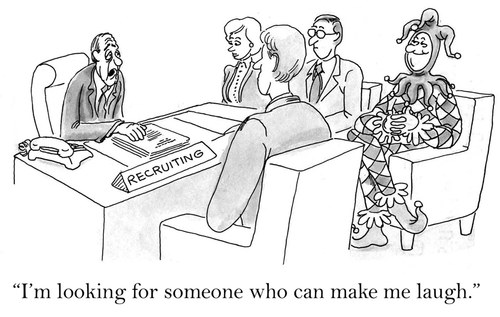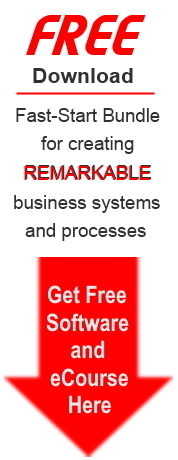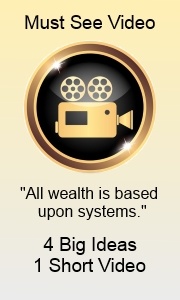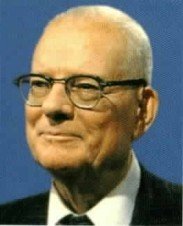Many small-business owners do not have formal job descriptions. Big Mistake! A job description is more than just a list of things an employee should do. As important as that is, the job description is also the primary tool used to fit the right person to the work assignment.

People are often the most valuable and expensive components of your business ystems and processes. Every hire is important. Every miss-hire is expensive. The job candidate should fit the job function just as you would fit a component part in a piece of equipment. Think of a job description as a specification for a system component called “accountant,” “welder,” or “salesperson.” The better your part fits, the better your business system or process performs.
Job Analysis
To prepare a job description you must first perform a job analysis. This is done by gathering information about the job through observation, questionnaire, and interviewing employees. Your analysis will identify the following:
- The purpose of the job
- The essential functions of the job (duties, responsibilities, methods, desired results)
- The qualifications needed (training, knowledge, skills, experience, personality traits)
- Special requirements (schedules, travel, environmental conditions, physical demands)
- Salary and benefits
Results-Oriented Job Descriptions
Job descriptions are developed from the job analysis. They are used in the employee-selection process, training, performance appraisals, and when considering compensation. A results-oriented job description defines what job-results the organization requires to accomplish its mission, strategy and goals. It focuses first on the desired job outcomes, and then adds the tasks or duties necessary to accomplish those outcomes (get “Results-Oriented Job Description” sample form).
For example, a receptionist’s duty may be to answer the telephone. However, the person’s real responsibility is to help customers. A human-resource person hires and terminates employees, but their underlying purpose is “to get the right people on the bus and the wrong people off the bus” (Jim Collins, “Good to Great”)—to fit people precisely to job requirements.
The value of a results-oriented job description is to remind employees of why they do a task, and how it benefits the organization.
Uses of the Job Description
A clear and concise job description contains all relevant information pertaining to the job and what is required to be successful. In the job interview, the potential candidate can determine whether the job is right for them. This will prevent your company from hiring the wrong person and wasting valuable time and resources.
In addition, job descriptions provide an agreement between supervisors and workers as to the expected performance results. This is particularly important for employee evaluations and monetary considerations. Job descriptions also give solid legal backing for wrongful termination and discrimination claims.
Elements of a Good Job Description
The following is a brief description of the categories that make up a well-written job description:
- Job Title – Consider internal and external status issues. Avoid inflating titles.
- Department/Location – Where will the person work?
- Reports To – What is the job title of the person’s supervisor?
- Job Purpose – Include one or two sentences summarizing the primary function and general purpose of the job.
- Essential Functions – Most positions will have five to eight major function areas. List them in descending order of importance, and if desired, indicate the percentage of time spent on each duty. Use clear and concise language; closely related duties should be grouped together in one responsibility statement. Avoid gender-based language. Identify the major functions of the job with short headings that begin with action verbs. Describe the work in terms of desired outcomes (see “Results-Oriented Job Description” sample form).
- Disclaimer Statement – Supervisors may revise and/or add duties in response to changes in requirements or employee skill levels. To reflect this, the following statement should be included in all job descriptions: “The employer reserves the right to change or assign other duties to this position.”
- Job Qualifications – In a results-oriented job description, use the following statement: “Job qualifications are stated in the Essential Functions section of the job description. An employee must be able to accomplish the Essential Functions in order to be competent in the job. Other special requirements are noted below.
- Special Requirements – Include requirements not specifically mentioned in the Essential Functions. List minimum specifications for formal training, education, certifications, and licenses. Identify specific knowledge, skills, and/or abilities that are required. Describe physical demands, special environmental conditions, unusual work schedules, and travel requirements. If important, indicate required work experience and desired personal qualities.
- Type – Is the person Part-time or Full-time?
- Term of Employment – Is the work Permanent, Temporary, or a specific length of time (e.g., 12 months)?
- FLSA Status – Is the person subject to overtime laws—Exempt or Nonexempt?
- Wage or Salary – List the specific wage or wage range.
- Date Written – Note the original or revision date of the Job Description.
- Approving Authority – Include the supervisor’s signature and date of approval.
- Employee Acceptance Signature – Get the signature and date from the job candidate.
Tips
Education and experience requirements are where inadvertent discrimination may occur. Your educational requirements must be a real necessity for the job. If someone could accomplish the work with equivalent job experience, but who lacks a specific credential, the job description should be modified. To avoid age discrimination, experience should not include an upper limit. Credentials, such as degrees and licenses, are absolute necessities in some jobs. However, be sure that whatever credentials you establish have a direct bearing on the candidate’s ability to become a top performer.
Job descriptions are be written in clear and concise sentences. The basic structure for sentences in a job description should be “implied subject/verb/object/explanatory phrase.” It is best to start with action verbs like “operates” and “maintains” (James R. Lindner, “Writing Job Descriptions for Small Businesses,” Misc. Pub 93-9, Ohio State University, Piketon).
The job you describe must be truly doable. When you combine several tasks into the same job description, make sure you’re not creating a job that very few people could fill. For example, I recently saw an ad for a website developer. The company was seeking someone who was a graphic designer, a programmer, content writer, search engine optimizer, and marketer. It would take a pretty special person to have all of those skills.
Focus on the end-result of the task, not how to achieve it. For example, “Must be able to move 25-pound aluminum parts from a 40-inch high conveyor belt to a 60-inch high platform 3 times per minute for 2-3 hours daily,” is preferable to “Must be able to lift 25 pounds.”
Use specific language such as the examples below.
Too general: Computer literate
Specific: Proficient with Microsoft Word, Excel, QuickBooks
Too general: Good communication skills
Specific: Ability to communicate technical information to non-technical audiences
Too general: Handles administrative chores
Specific: Receives, sorts, and files monthly personnel action reports
The last item of your Essential Functions should be a catch-all phrase such as: Contributes to organization success by accepting new assignments, helping team members, learning new skills, and striving to improve team results.
Job Descriptions Should Be Written and Clear
Create results-oriented job descriptions (sample form) if you want to get the most out of employees and your business systems and processes. When expectations are written and clear, people work better, and they work better together.







